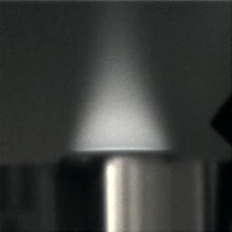Overview
In the last decades there has been growing interest in Hydrogen combustion. This can be attributed to applications in energy storage and reduction of CO2 emissions. Safety issues raise the demand for reliable mechanisms capable of describing transient regimes that are typical for explosion like processes. Experimental results show pulsating / oscillating flame propagation regimes at high pressures. Additionally, the direct usage of hydrogen as a fuel is fraught with complications. In order to avoid the volatile nature of the fuel and embrittlement problems the usage of blended fuels such as Methane-hydrogen is a viable alternative.However, the same phenomenon is also observed in blended fuels in a burner stabilized configuration.


Objectives:
- Numerical modeling of the process using the in-house code INSFLA.
- Determine the critical conditions for the onset of oscillating flames in premixed mixtures and examine the frequency-amplitude characteristics.
- Identify the differences in the characteristics produced by different chemical mechanisms.
- Identify the nature of instabilities occurring in different bends of methane and hydrogen
In order to accomplish the above objectives, the methodology followed will involve:
The usage of a one-dimensional detailed numerical simulation of bifurcation phenomenon.
Analyzing the results from the detailed calculations using post processing software to better understand the nature of the instabilities.
During the bachelors and master’s projects, the focus will primarily be on extracting and characterizing the instabilities seen in the hydrogen flame. The investigations will be numerical and use the in-house code INSFLA and HOMREA.Knowledge of MATLAB (or any other software such as MAPLE) and shell scripting would be an advantage.
